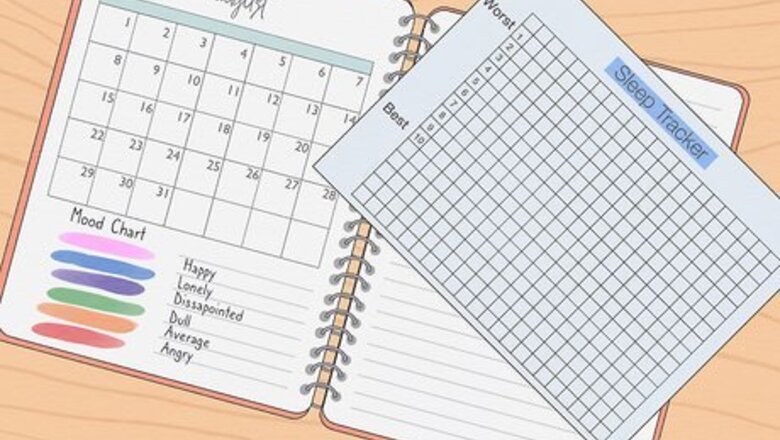
views
Creating Your Mood Chart
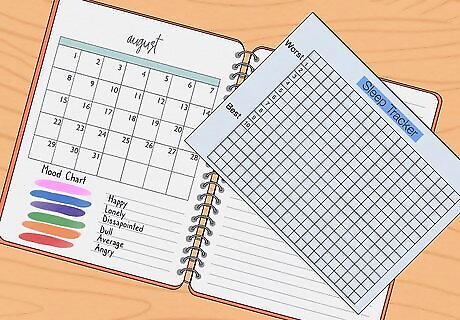
Decide on which format you want to chart. There are many options for creating your own mood chart. The method you choose will depend on your preferences. You can create a mood chart using tables from either Microsoft Word or Excel and print several copies. You could use blank sheets of paper, a pencil, and rulers to draw your own chart. You could also simply write out the details of each day on a journal page. If you are not creative or do not want to take the time to keep up with a paper chart, you can track your mood online at websites that usually offer a way to connect with likeminded people. You also have the option to log onto the Apple App Store and Google Play Store and search for "mood chart" or "mood tracker" apps to download on your phone. Or, you can keep a paper chart that you have downloaded.
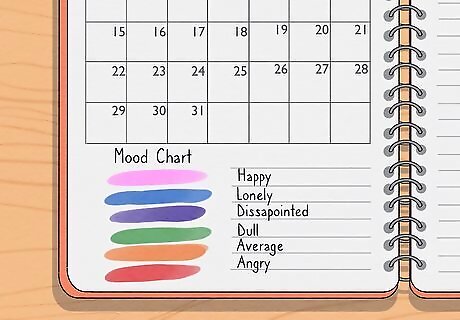
Choose what you will be tracking. Mood charts can be as simple or elaborate as you like. Some people merely track their sleep, moods, anxiety and medications, while others keep tabs on sleep, mood, energy, eating, behaviors, medications and so much more. Decide which factors are most relevant or helpful to your case and include them in your chart. For the purposes of creating our chart we will be focusing on mood, anxiety, sleep, and medications by documenting them in a journal.
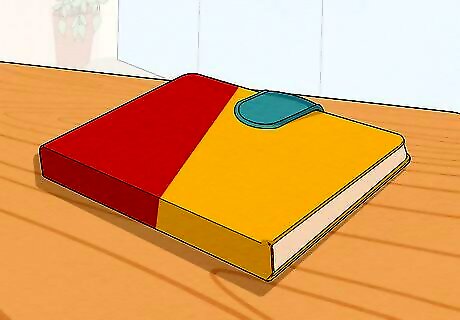
Purchase a journal. If you want to describe your sleep and mood status daily and also have the option of writing additional notes about what happened that day, a diary or journal would be most helpful. Buy one that is attractive to you and have at least 10 to 15 lines of space on each page. Every page in your journal will represent a day in your life.
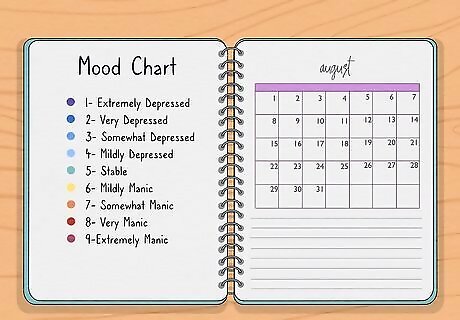
Create a rating scale from which to rate each element. Since we will be tracking mood, anxiety, sleep, and medications, we will only be required to develop spectrums for mood and anxiety. Sleep will be documented as hours slept, and medication will list which pills you took, at what time, and at what dosage. We can include a precise rating scale on the first page of the journal so that the ratings are always accessible. Your rating scale might look like this: 1- Extremely Depressed 2- Very Depressed 3- Somewhat Depressed 4- Mildly Depressed 5- Stable 6- Mildly Manic 7- Somewhat Manic 8- Very Manic 9-Extremely Manic If you are tracking additional factors, such as anxiety, you can follow a similar protocol. Create a rating scale from 1 to 9 (or some other number) ranging from Extremely Low to Extremely High in anxiety.
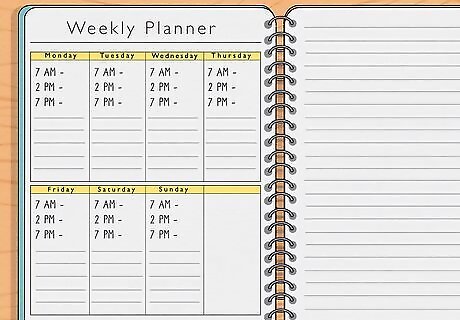
Determine how many times a day you would like to chart. If you are up for about an 18-hour period, it might be most helpful to chart three times a day - every six hours. Create a special spot for each time-frame in your journal and leave 3 to 4 lines open beneath the time spot. Then, leave a number of lines clear at the bottom of each page for additional notes on your mood, energy, stressors and/or behaviors for that day.
Using Your Mood Chart
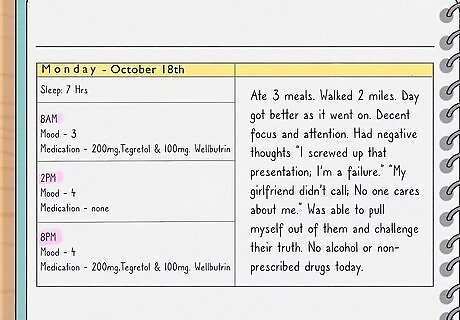
Track your mood. As you begin you may need to sync your charting with your medications to help you remember. Over time, charting will become a natural and productive part of your day. See the example below for how your chart might look. October 18th: Sleep: 7 hrs 8:00am: Mood: 3 Medications: 200 mg Tegretol; 100 mg Wellbutrin 2:00pm: Mood: 4 Medications: None 8:00pm: Mood: 4 Medications: 200 mg Tegretol; 100 mg Wellbutrin Notes: Worked. Ate 3 meals. Walked 2 miles. Day got better as it went on. Decent focus and attention. Had negative thoughts "I screwed up that presentation; I'm a failure." "My girlfriend didn't call; No one cares about me." Was able to pull myself out of them and challenge their truth. No alcohol or non-prescribed drugs today.

Develop a regular habit of mood-charting. The only way you and your doctor can learn anything useful from your mood chart is by doing it daily. Missing one day can cause you to forget or minimize a new change in your mood, anxiety or sleep. Even good habits like charting can be hard to follow at first. To ensure that you regularly chart, and to build motivation, follow the 3 R's of habit change: Reminder: Cement this new behavior by notifying yourself of when you should be doing it. It may be simpler to set a firm rule that each day you will chart your mood right before breakfast, lunch, and dinner. Routine: Follow the same procedure for charting each day so that you physically and mentally become accustomed to incorporating this new behavior into your day. Reward: In addition, to learning new and interesting facts about yourself through charting, you should also create some other regular reward for sticking to this behavior. Maybe you could tell yourself that if you chart 3 times a day for a week, you will reward yourself with a treat over the weekend.

Review your progress. Charting your moods is especially helpful when you are switching to a new medication, noticing repeating cycles in your mood states; wanting to verify that your medication is working; and to show your doctor your progress. Look over your journal each week and at the end of each month to note patterns in mood changes or repetitive stressors that influence your mood and behaviors.[Image:Create a Mood Chart for Yourself Step 8.jpg|center]]


















Comments
0 comment